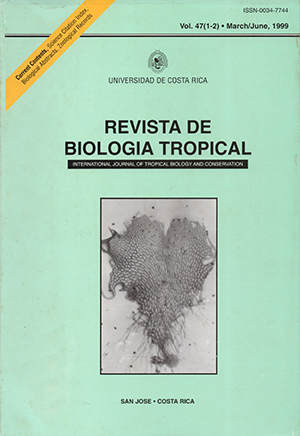Abstract
Fecal bile acid patterns have been used successfully to identify scats. Neotropical felid scats are capable of this biochemical identification because they present low concentrations of plant pigments that would interfere in fecal bile acids detection. However, neotropical felid scats have poor quantities of bile acids, so we developed in this work a proper technique for their extraction, visualization and determination. Twenty eighth feces of seven different felid species, collected from Zoological and Wildlife Parks, were dried and pulverized. The procedure for analyzing feces is: Take one g of pulverized feces and shake for 3 hr at room temperature in 20 ml benzene : methanol; filter and evaporate to 5 ml. Spot on TLC plate and develop in toluene :acetic acid- :water. Dry and visualize with anisaldehyde. Field collected scats could be identified by the bile acids pattern revealed by this specific technique and ,then, used as a source of information for distribution, density and food habits studies.##plugins.facebook.comentarios##

This work is licensed under a Creative Commons Attribution 4.0 International License.
Copyright (c) 1999 Revista de Biología Tropical
Downloads
Download data is not yet available.


